Objekte
Judaica Stadtmuseum Trier
Fragment of a Torah scroll from the old Trier synagogue on the Zuckerberg
Parchment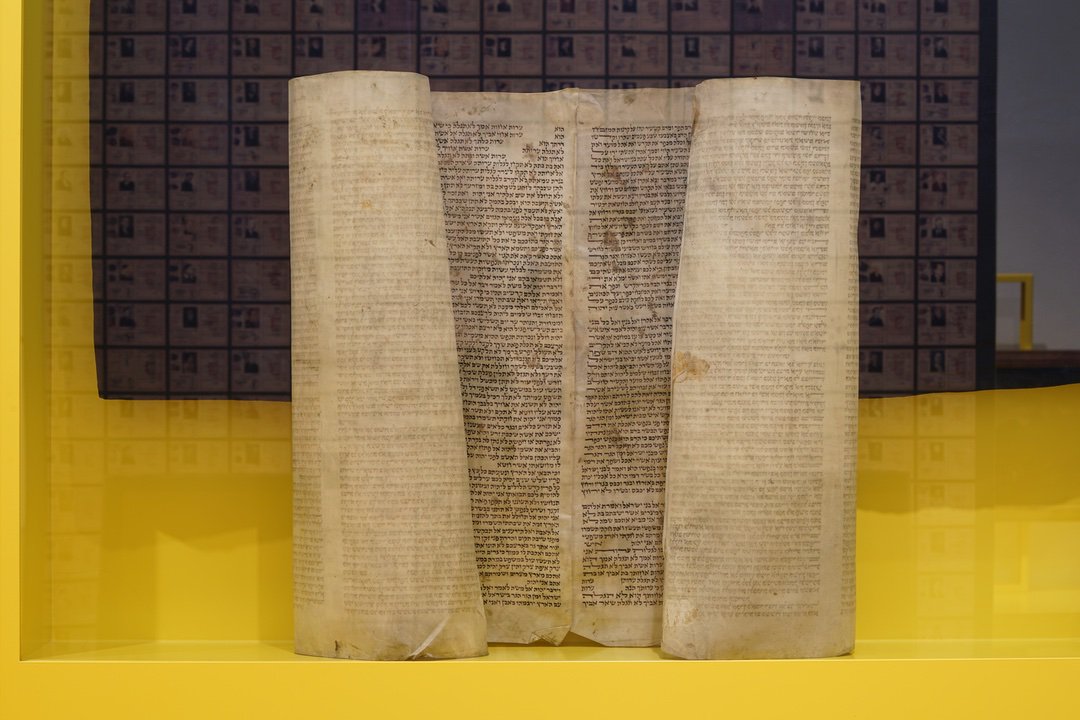
Curtain for a Torah ark
Textile, 1950s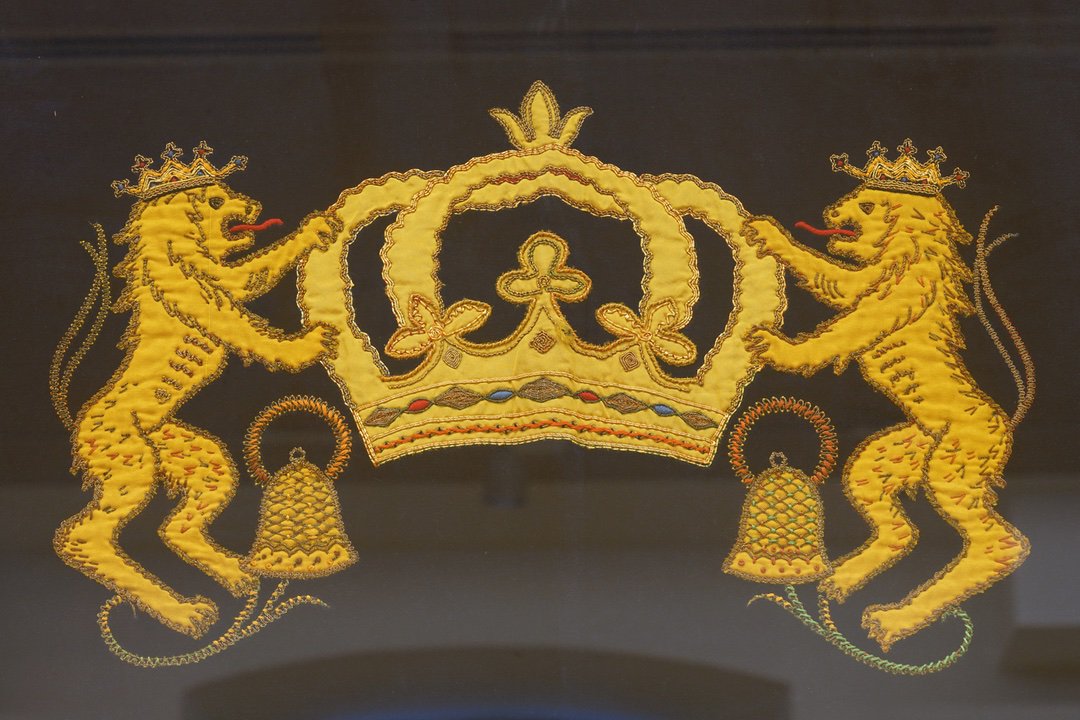
Torah wimpel
Textile, 19th century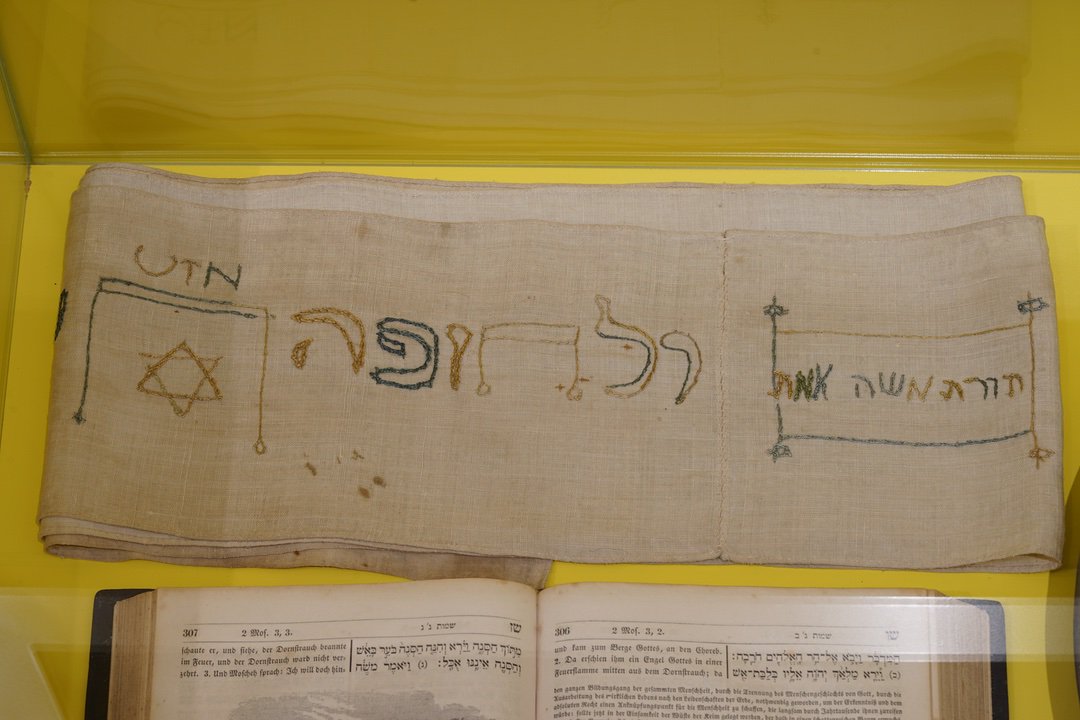
Mizrah wall plaque with wreath of oak leaves
Coloured etching, 19th c.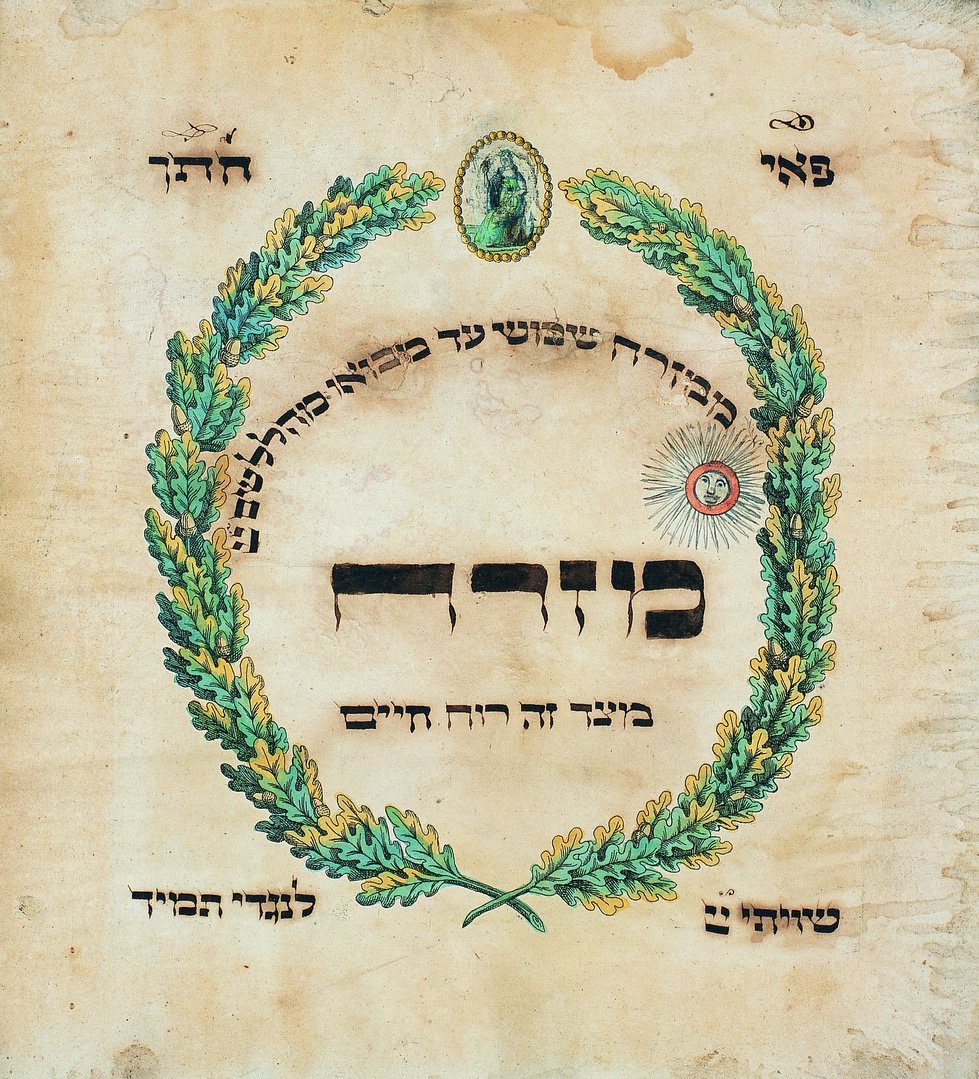
Shabbat lamp
Brass, 19th c.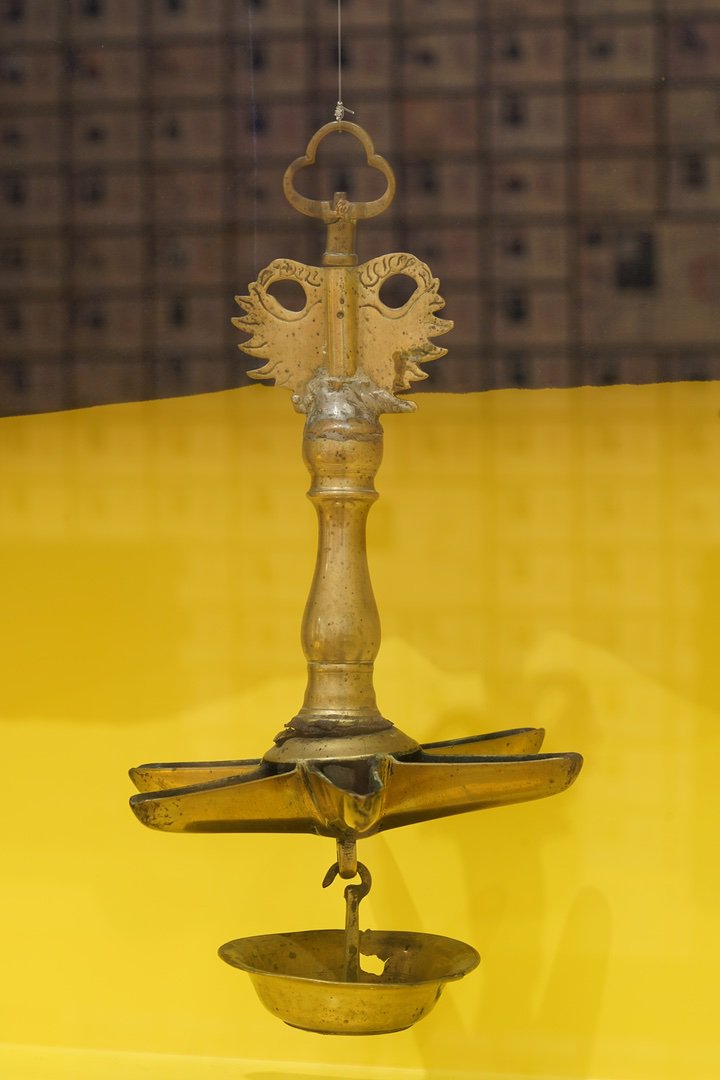
Passover Seder plate
Pewter, 1748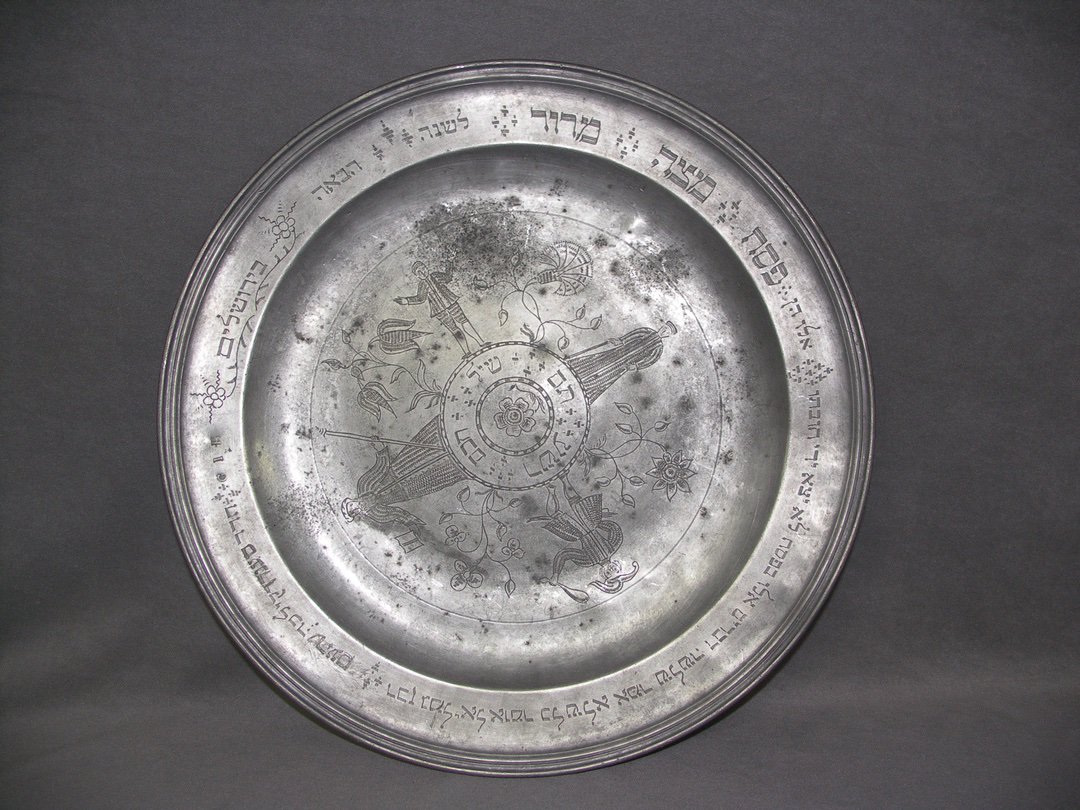
Roman oil lamp with seven-branched candelabrum (menorah)
Replica of an original in the Rheinisches Landesmuseum Trier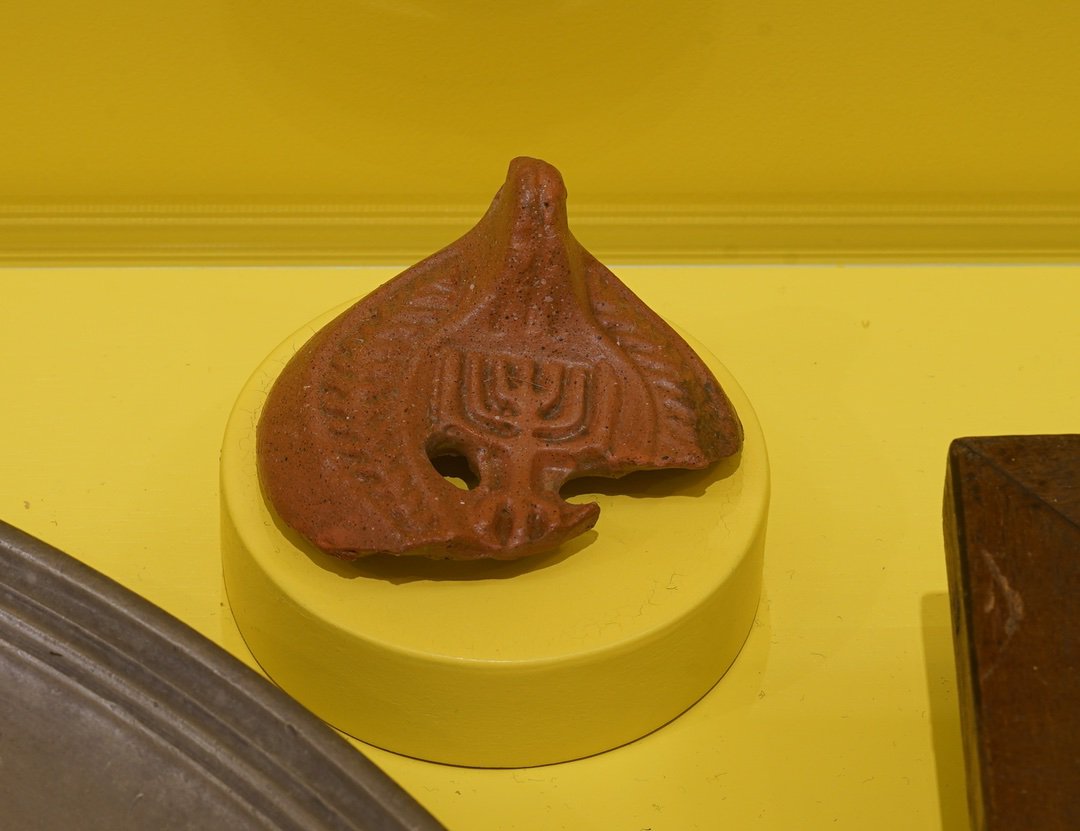
„Stolperstein“ for Esther Wolff, née Levy
Brass and cement, 2004
Gravestones
Jacob’s gravestone
Trier, Dietrichstrasse, erected between 16 September 1262 and 5 September 1263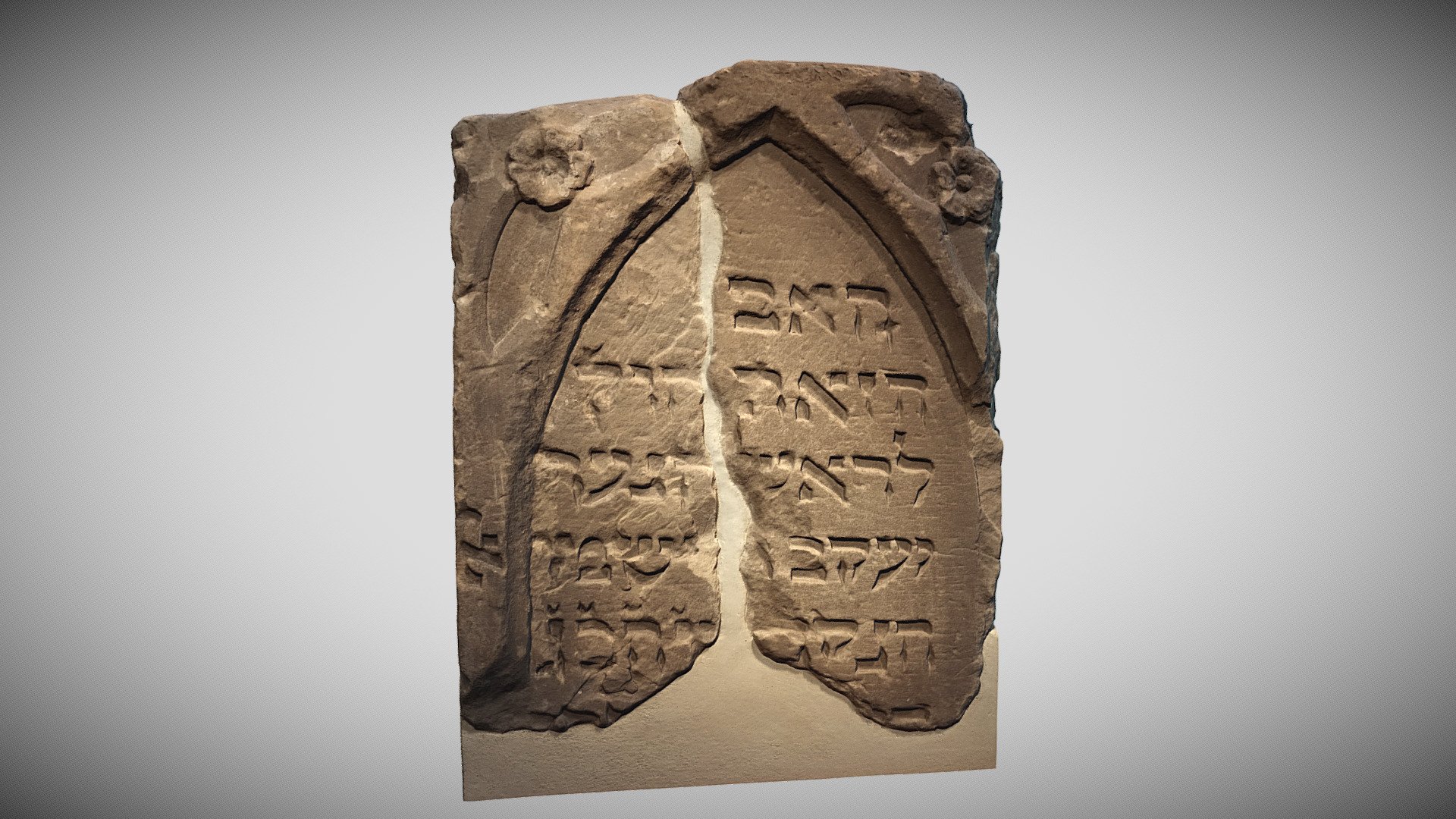
This stone / was erected / at the head of the boy / called Jakob, son of Herr Samuel, / who was buried in the year 5023. / [---].
Frau Belkin’s gravestone
Trier, corner of Viehmarktplatz and Viehmarktstrasse, dated 9 February 1349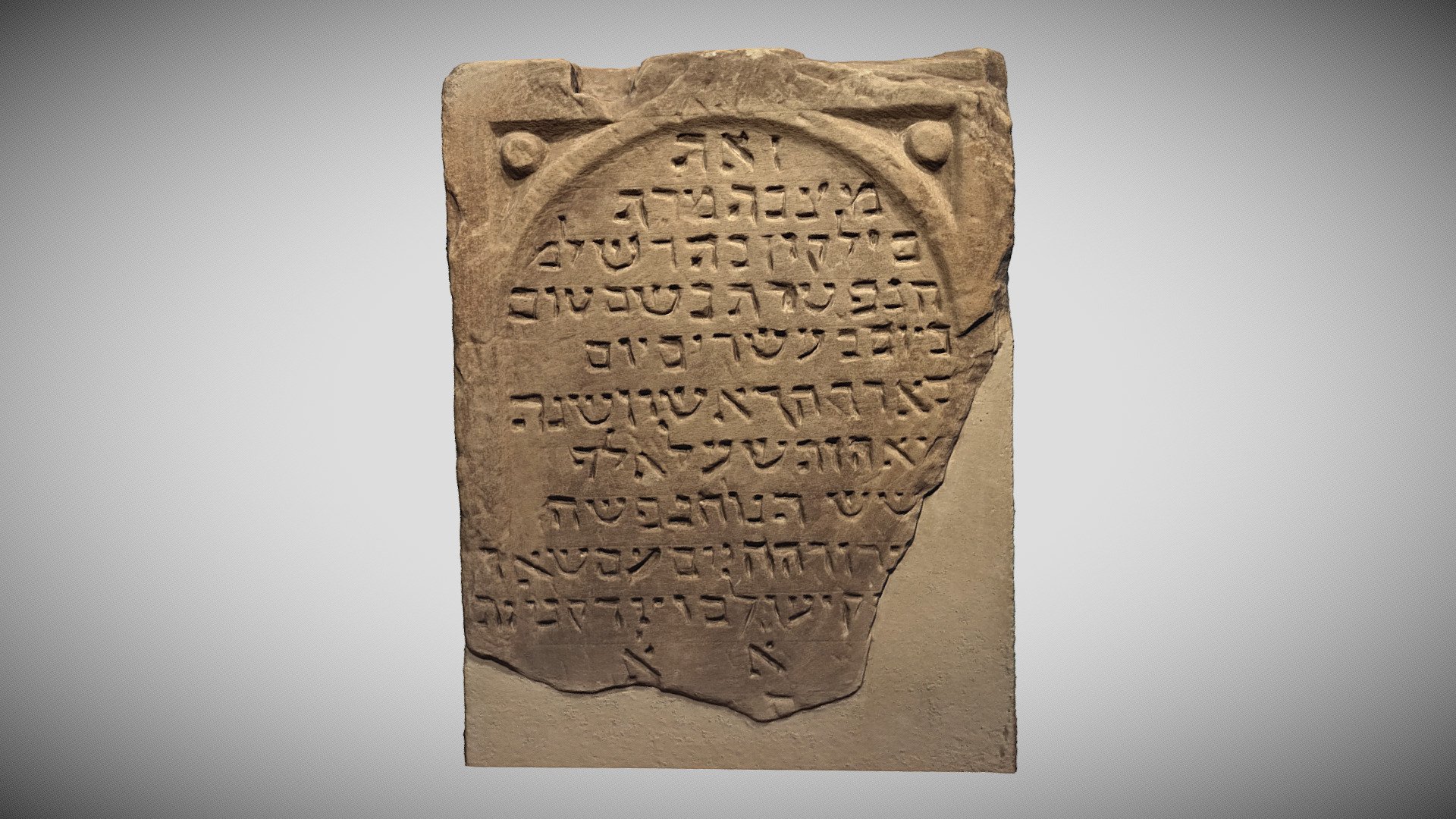
This is / the gravestone of Frau / Belkin, the daughter of Herr Salomo, / who died with a good name / on Monday, the 20th day / in the first month of Adar in the year / 109 of the / 6th millennium. May her soul rest in peace / be bound up in the bond of eternal life with the other righteous men and women of the world. / Amen, Amen, / Sela.
Jewish gravestone, subsequently re-shaped into a cross
Trier, Jüdemerstrasse, dated 25 January or 24 February 1346
[---] / to whom they gave rest [---] / at the beginning of the month of Adar [---] / in the year [5]106 of the [shortened] calendar. / Amen, [Sela].
After the desecration of the Jewish cemetery, the gravestone was reshaped into a cross, probably to demonstrate the supremacy of Christianity over the Jewish faith.
Gravestone of a female martyr
Find site unknown, erected between 6 September 1347 and 24 August 1348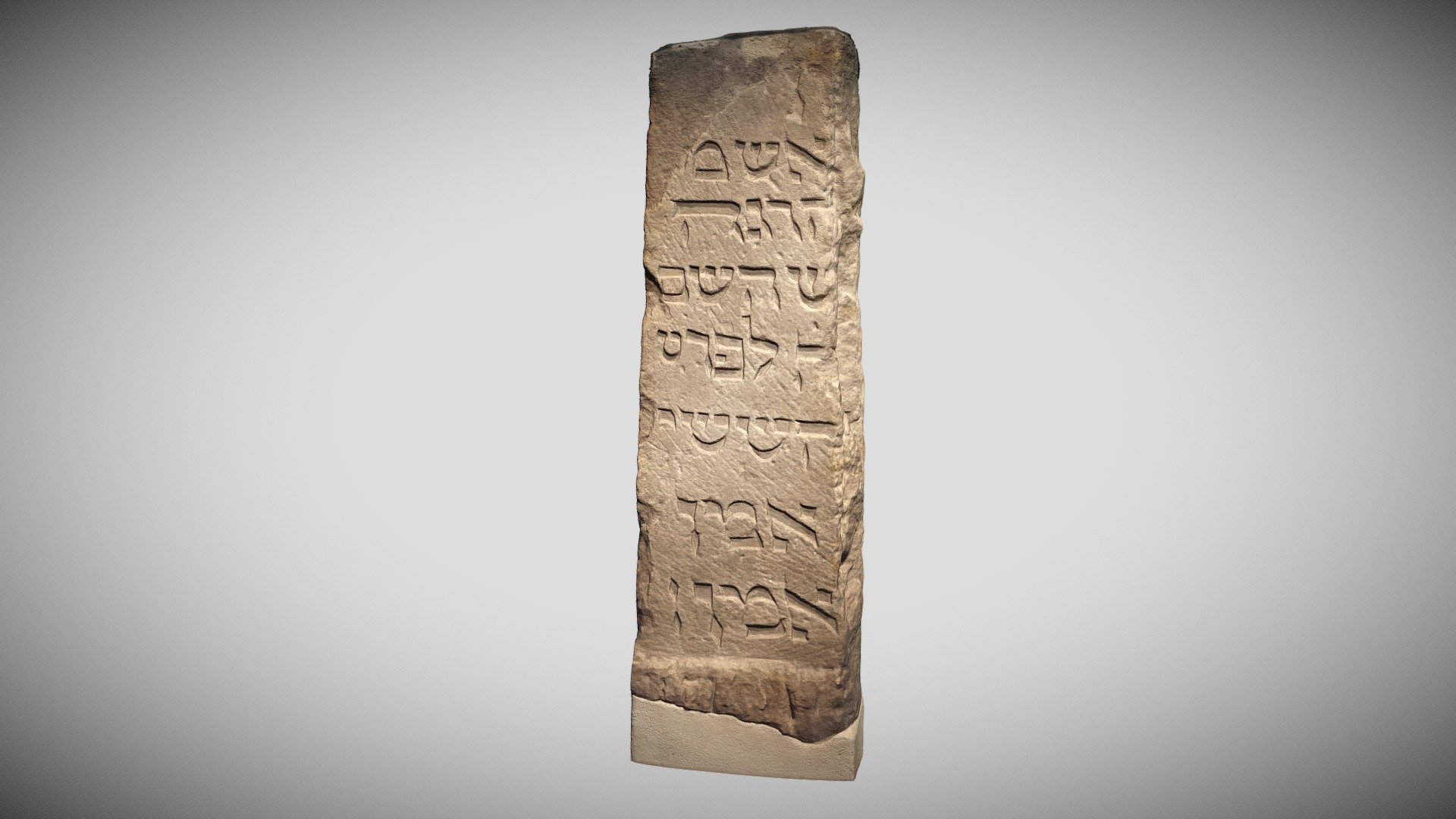
[This] monument, / [erected] at the head of Frau / [--- who] was killed / [--- for] sanctifying God’s name/ [in the year 10]8 of the [shortened] calendar / [--- in the] 6th [millennium] / [---] Amen, / [---] Amen.
The words “for sanctifying God’s name” show that the deceased was a martyr, murdered for her faith.
„Complete practical cookbook for the Jewish kitchen“ by Bertha Gumprich
Printed in Trier by Kaufmann & Co, first published in 1888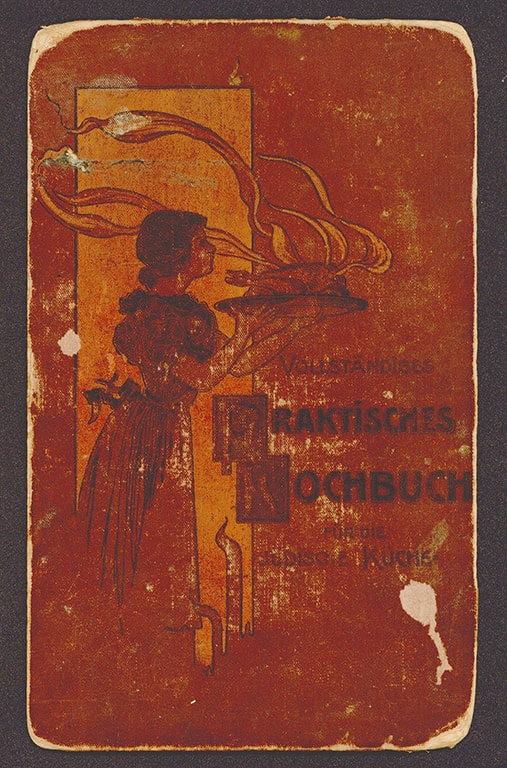
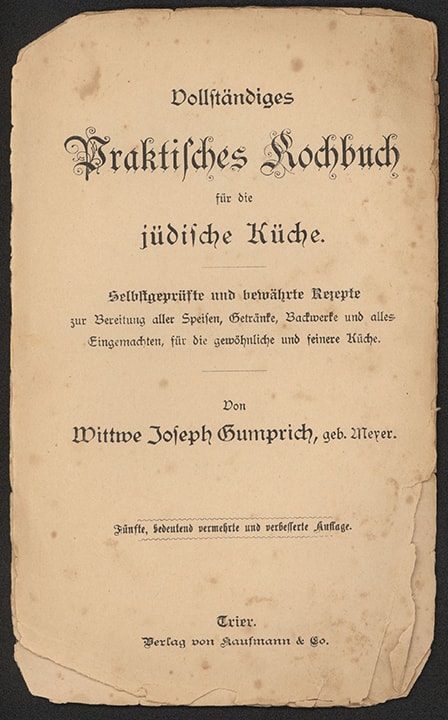
A bestseller at the time - the Jewish cookbook by Bertha Gumprich. Published in Trier, the book is a living symbol of the rich Jewish everyday culture in the city and countryside, as it succeeded in popularizing Jewish cuisine and regional dishes. The book was also very popular as a birthday present for girls from Christian families!
With regard to the initially self-published work, Gumprich ambitiously states that despite the large number of books, »there is a decided lack of a good Jewish cookbook«, because: »The ... existing cookbooks are either not Jewish or not practical«.
BETE'AVÓN - Bon appétit!
Moving Mishnah - a product of the Jewish art of printing
A book from Italy, rarer than the Gutenberg Bible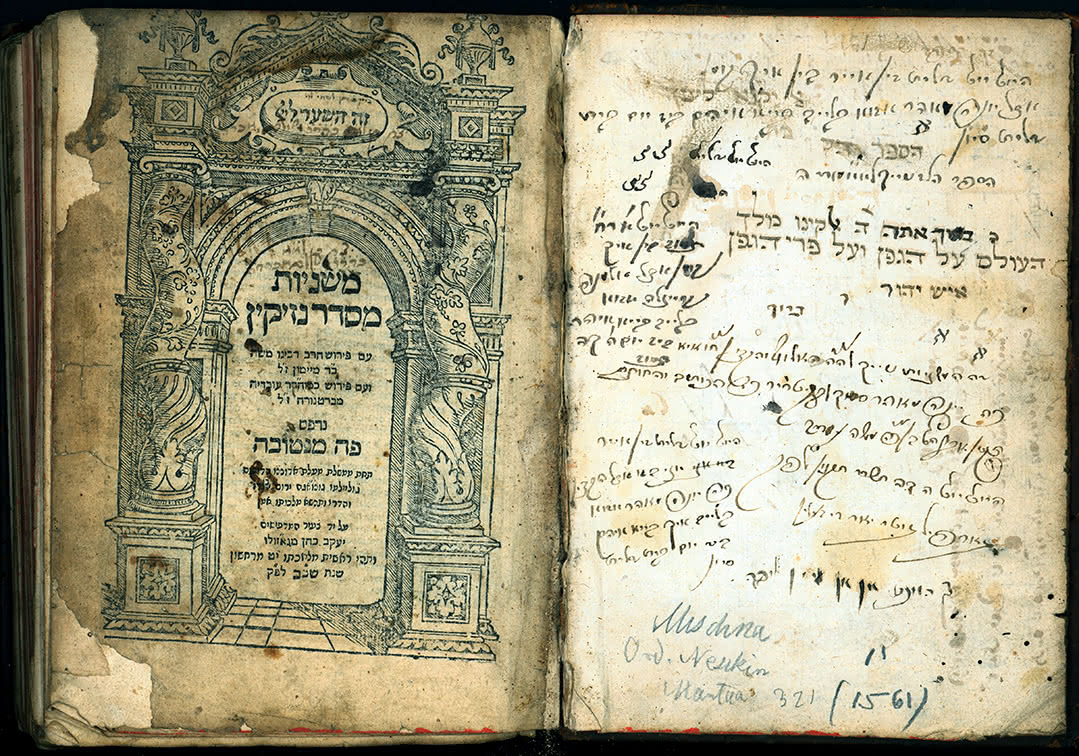

In cosmopolitan Sabbioneta, Jews and their artistic creations were also welcome, but they were spared the autodafés of Jewish writings: in the 16th century, experts from half of Europe worked in the workshop of the printer Foà, their printed products were an intercultural project, Christians and Jews complemented each other. For example, reprints of burnt Hebrew books were produced, including a Mishnah (the basis of the Talmud).
After Jewish culture was also destroyed in Sabbioneta, the craftsmen scattered to different parts of the world, which is why the Mishnah, a copy of which the city library also owns, was completed in Mantua.
You can find out more about the elaborately designed, rare print and its role in Jewish culture in Trier in the Object of the Month April 2021.
Hebrew fragments from the city library
Hidden texts from Trier and Eberhardsklausen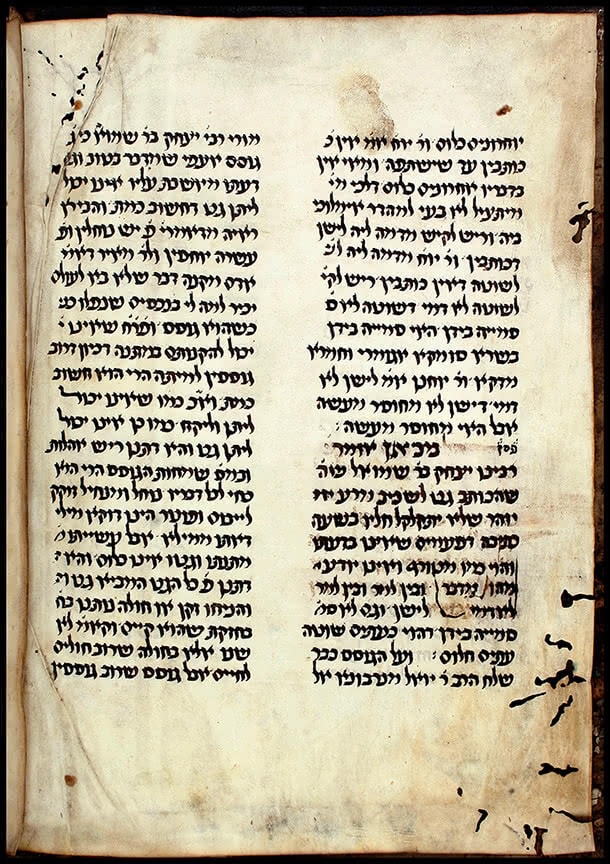
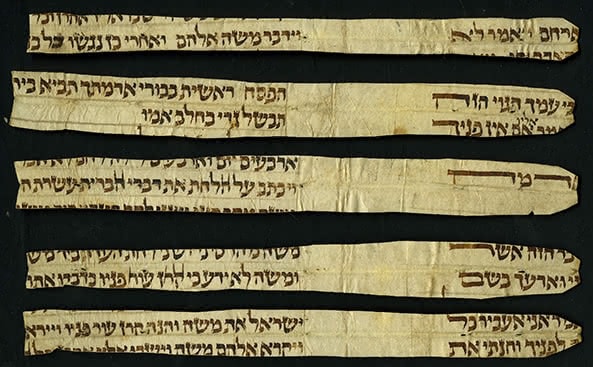
Several hundred handwritten fragments comprise the collection of Hebrew text fragments in the scientific city library. The fragments, most of which come from the bindings of the Eberhardsklausen holdings, are considered the most important such collection in Germany - including important new discoveries.
Together with the few fragments from the Trier monasteries and the cathedral, the question arises as to why these leaves and strips, which were intended to stabilize the binding, are so often found in the library: Since orthodox Jews were forbidden to sell their texts, it can be assumed that the destruction and loss of Jewish literature occurred after pogroms, for example.
»For the pure love of science«: prints from the Maas and Mayer brothers in Trier
Media start-up in 19th century Trier: colonial goods, paper trade, printing works, publishing house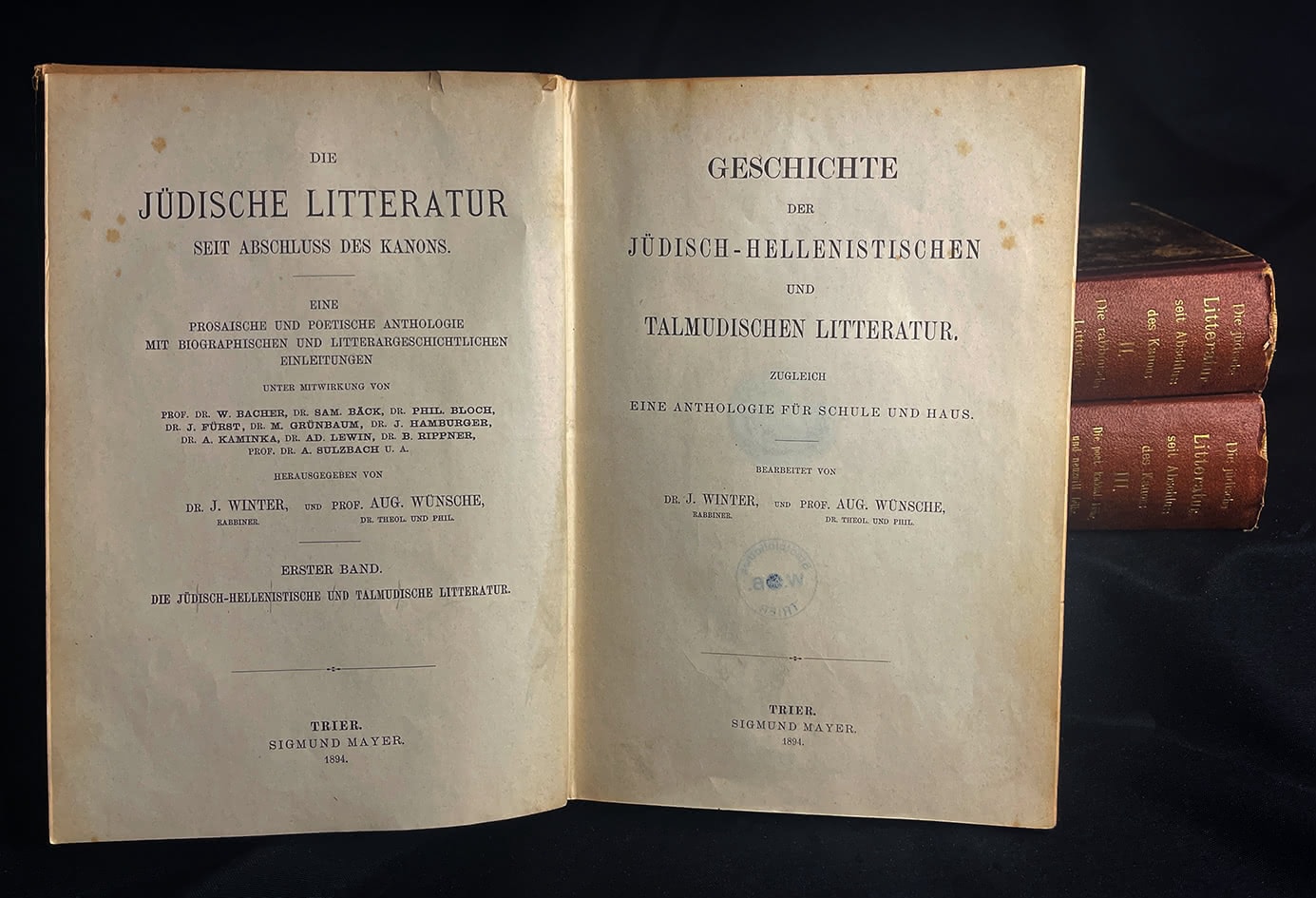
Starting out from what was then known as a colonial goods shop, the entrepreneurial sons Maas and merchant Adolph Mayer from Trier founded a kind of start-up in 1867, as one might say today. Business areas: Paper production, book printing and publishing - they specialized in Jewish literary history.
And so a three-volume anthology of 'Jewish literature since the end of the canon' (1894/96) was published in the company's environment, or more precisely in the publishing house of Sigmund Mayer, A. Mayer's younger brother, which was spun off from it.
It can be found in the City Library under the shelfmarks 20 A 489 to 20 A 491 and underlines the publisher's self-image: according to S. Mayer in the preface to an earlier publishing production, they printed »without any material purpose out of pure love for science«.